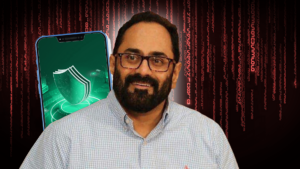
Artificial Intelligence (AI) is no longer just a buzzword in the tech world; it’s making significant strides in various sectors, and mental health is no exception. According to WHO, Mental health is a state of mental well-being that enables people to cope with the stresses of life, realise their abilities, learn well and work well, and contribute to their community.
Mental Health Day is celebrated on 10th October to de-stigmatise and create awareness regarding mental health. It has been observed annually since 1992. Since then, the themes have evolved every year, with ‘Mental health is a universal human right’ as the theme for 2023. And with AI paving its way into this realm, it is making access to mental health easier and affordable.
Role of AI in mental health
Fusing mental health with technology helps mental health practitioners in many ways, such as monitoring their patient’s symptoms, treatment plans, and progress. Another use of AI is coding patient language which involves transcribing the audio and/ or videos from the session and using AI here can help ease the task and save time. Another role that AI plays is that of being a therapy chatbot with which individuals can communicate at any time.
Benefits of AI in mental health support
As we delve deeper into the digital age, the fusion of AI with mental health emerges as a beacon of hope for many seeking support. The benefits of this integration are manifold, offering solutions that are not just innovative but also transformative.
Easy to access and personalisation
With chatbots, people can immediately converse with the carefully curated responses of AI bots rather than having to wait for appointments or travel to any location where the therapist or counsellor might be, thereby also transcending the geographical barrier. Additionally, it can also be personalised based on the individual’s previous conversations or data provided using analytics.
Early detection
Based on the contents of the conversation, these algorithms can also contribute to early signs of distress that might go unnoticed, especially since these bots would be more frequently used than in-person sessions.
IoT integration
Using IoT devices, the individual’s data can be monitored constantly. Especially with regard to symptoms that indicate an episode of their respective mental health concern. This can be with regard to heart rate, and breathing patterns, which for instance help detect stress.
Startups harnessing AI for mental health
As the fusion of AI and mental health gains momentum, several trailblazing startups are emerging at the forefront of this convergence.
Woebot Health
The services provided by Woebot range from that for adults, and adolescents to maternal health. According to the platform, it offers reliable, compassionate support, and can help reduce symptoms of stress, depression, and anxiety. It also provides support outside of the traditional working hours which means, users can chat with the bot any time they are in distress. Woebot Health uses Cognitive Behavioural Therapy (CBT) techniques and integrates it with Natural Language Processing (NLP).
Wysa
Bengaluru-based Wysa was founded by Jo Aggarwal and Ramakant Vempati in 2015. The platform utilises a “clinically validated” AI chatbot to provide users with immediate support. With over half a billion AI chat conversations, the platform majorly focuses on providing support for stress, anxiety, and depression. by using CBT, mindfulness and other techniques that help alleviate their anxiety or other issues.
Ginger
Founded at the Media Lab at MIT, in 2011 by a team of entrepreneurs and data scientists, the platform offers one-on-one mental health coaching, therapy, psychiatry, self-guided care, and an Employee Assistance Program. This also includes text-based behavioural health coaching, video therapy & psychiatry and self-guided care resources according to the platform.










